Finding a roof leak involves checking for interior signs like water stains, then inspecting the attic and roof. If needed, use a water hose to confirm the leak’s location. This guide walks you through the process.
Table of contents
Why Finding a Roof Leak Quickly Matters?
Discovering a roof leak in your home is akin to finding a ticking time bomb. In states like Florida, where heavy seasonal rains and frequent hurricanes are the norm, the risk of encountering a roof leak is especially high. The potent mix of high humidity and strong winds can rapidly deteriorate roofing materials. In such circumstances, taking action is not just advisable, but crucial to protecting your home.
To help you understand the financial implications, using a Florida roof replacement cost calculator can be an invaluable resource for budgeting repairs or even a complete replacement.
Although it may seem like a minor annoyance at first—a dripping sound, a tiny puddle—the ramifications of even a small leak can be far-reaching, expensive, and at times, downright hazardous. Here’s why it’s critical to act swiftly.
Financial Toll
Imagine your home as a fortress; a roof leak is essentially a crack in your armor. If water can get through your roof, what’s stopping it from damaging the rest of your fortress? The immediate repairs might seem costly, but consider this: The cost of replacing soaked insulation, damaged ceiling boards, or even hardwood floors can be astronomical compared to fixing a leak promptly.
Structural Risks
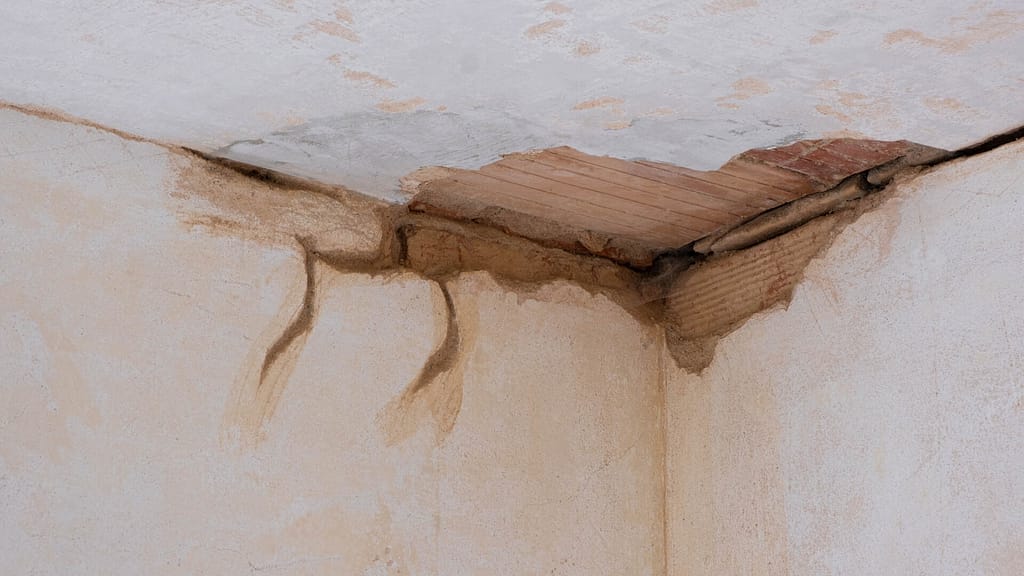
Over time, a ‘minor’ leak can compromise the structural integrity of your home. From the attic’s insulation down to the very foundation upon which your home is built, water infiltration is your enemy. Wood rot and rust can silently but surely degrade key structural elements, leaving you with a weakening home and a growing list of repair needs.
Health Implications
A leaky roof can compromise more than just your home’s structure; it can also put your health at risk. Wet, damp conditions are ideal for the growth of mold and mildew. For those with respiratory issues or allergies, this can make living conditions unbearable. Moreover, the constant dampness can attract pests, introducing another layer of health risks.
Utility Bills
Notice a spike in your energy bills? Wet insulation is far less effective at keeping your home temperature-regulated. Your HVAC system will have to work double-time, leading to increased energy consumption and, by extension, higher bills.
Property Value

Your home is an investment, and like any investment, its value can fluctuate due to a multitude of factors—one of them being a leaky roof. Water stains on the ceiling or walls, warped flooring, or a visibly damaged roof can severely devalue your property. If you plan to sell, you’re legally obligated to disclose such issues, which can deter potential buyers or lower your asking price.
Investigating the Source of the Leak
You might be brewing your morning coffee or unwinding after a long day when you suddenly notice: a watermark on your ceiling. Or perhaps it’s the unsettling sound of dripping water in a supposedly dry area of your home. Before panic sets in, let’s arm you with the knowledge to identify the common indicators of a roof leak.
Inside the Home
A roof leak often makes its presence known inside the home first, manifesting through subtle or glaring signs that shouldn’t be ignored. From water stains and strange sounds to increased utility bills and damp walls, we’ll guide you through the key indicators that suggest a leaky roof is disrupting your sanctuary.
Water Stains on the Ceiling or Walls
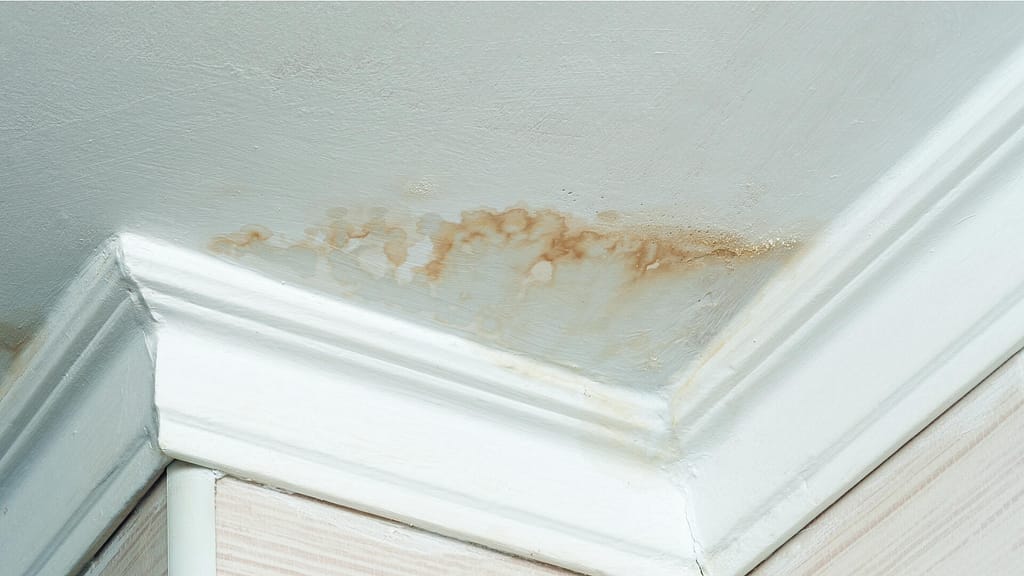
Brown or yellowish water stains on your ceiling or walls are classic signs of a roof leak. The discoloration occurs when water accumulates and slowly seeps through the plaster or drywall.
Dripping Sound
Sometimes the first clue is auditory rather than visual. The sound of dripping water, even if you can’t see the leak, should prompt immediate investigation.
Increased Energy Bills
A sudden increase in your energy costs could indicate that water has soaked the insulation in your attic, making your heating or cooling system work harder.
Exterior Wall Dampness
If your external walls are unexpectedly moist, it may be a sign that your roof’s edge or flashing isn’t adequately directing water away from your home.
Mold and Mildew
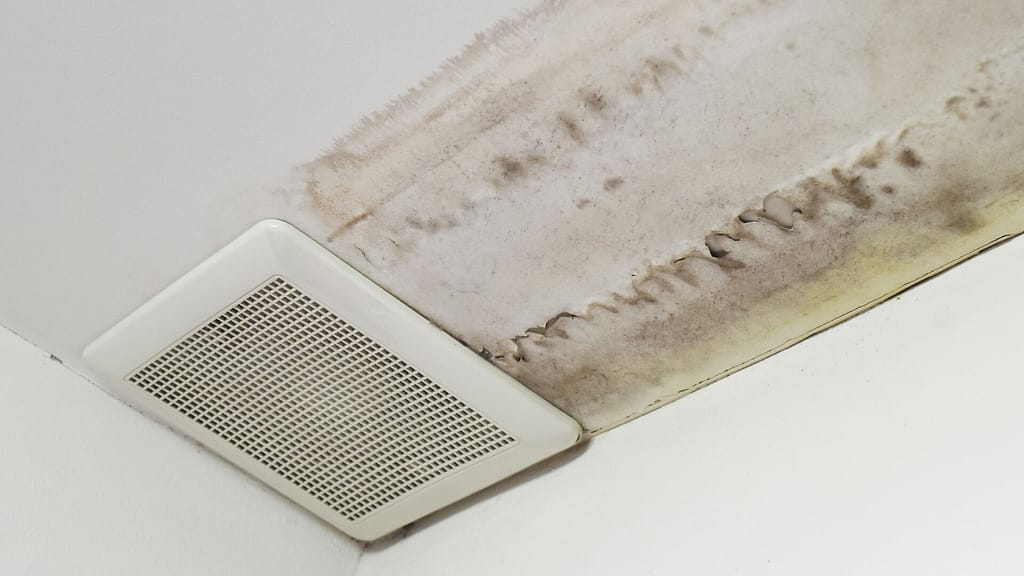
When you notice mold or mildew on your ceilings or walls, it’s a good indication that excess moisture is present. While it doesn’t confirm a roof leak, it strongly suggests a moisture issue.
On the Roof
After thoroughly inspecting your home’s interior for signs and symptoms of a leaking roof, it’s time to head outside and examine the roof itself to identify the leaks’ main entry points. The roof offers the most direct clues when it comes to locating the source of a leak.
Damaged Shingles
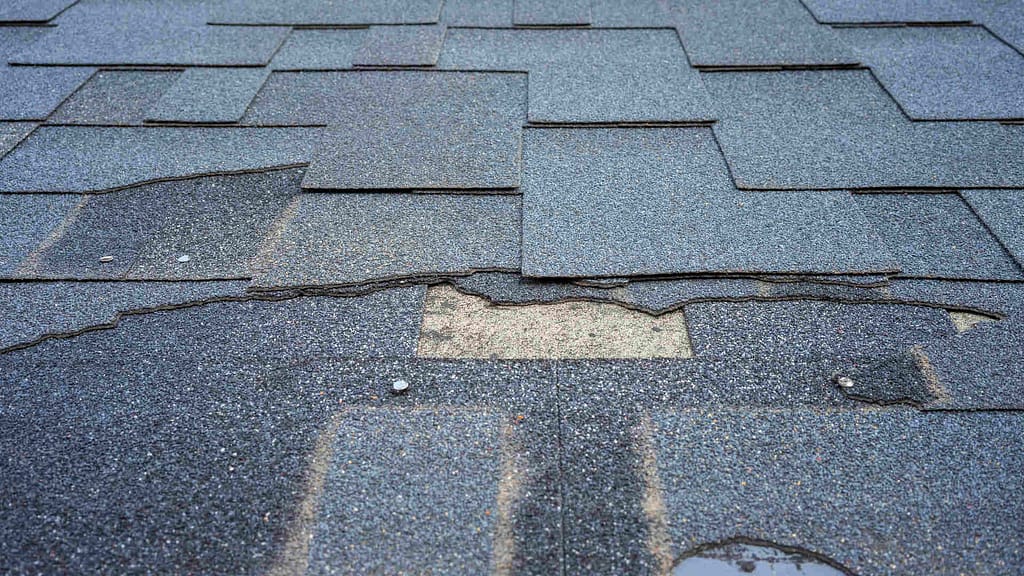
Shingles that are curled, cracked, or missing altogether are all signs that your roof is deteriorating. These can lead to leaks if not addressed.
Sagging Roof Deck
If the line of the roof is no longer straight and is sagging in areas, this may be a sign that moisture has permeated the decking material beneath the shingles.
Granules in Gutters
Asphalt shingles shed granules, which often end up in the gutters. While a small number of granules are normal, a large amount suggests that the shingles are nearing the end of their lifespan.
Rusted or Missing Flashing
Flashings are typically found around roof penetrations like chimneys, vents, and skylights. If they are missing or rusted, water can easily seep through these weak points.
Confirming the Leak Source
So, you’ve noticed some telltale signs of a roof leak—perhaps water stains on your ceiling or a steady drip-drip-drip sound in the attic. But how can you be sure you’ve identified the actual source of the leak? Accurate identification is vital because, without it, any repair work will be a shot in the dark. Here are some methods to confirm you’re targeting the right area for repair.
Water Testing Method
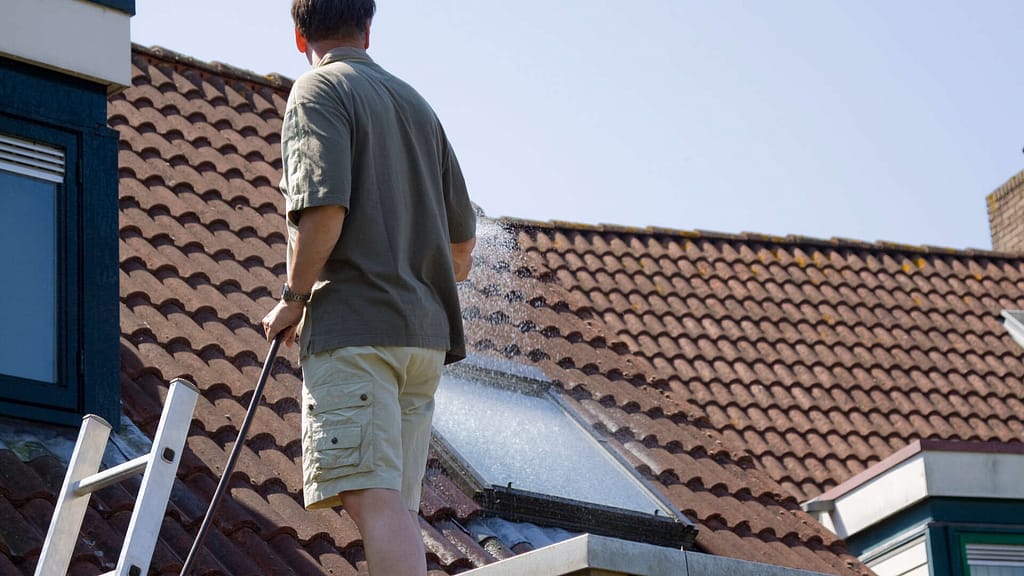
One of the most effective ways to confirm a leak source is the water testing method. You’ll need a helper inside the house near the suspected leak site and a hose. Start at the lower end of the roof and have your helper signal when water starts leaking inside. Slowly work your way up the roof, being careful to isolate one area at a time. This can be time-consuming but is usually very accurate if done methodically.
Dye Testing
If the leak is too small to detect through the water testing method, you may use a dye test. Add a small amount of non-staining dye (like food coloring) to water and then apply it to the roof. Your helper can then spot where the colored water starts to leak, confirming the source.
Use of Technology
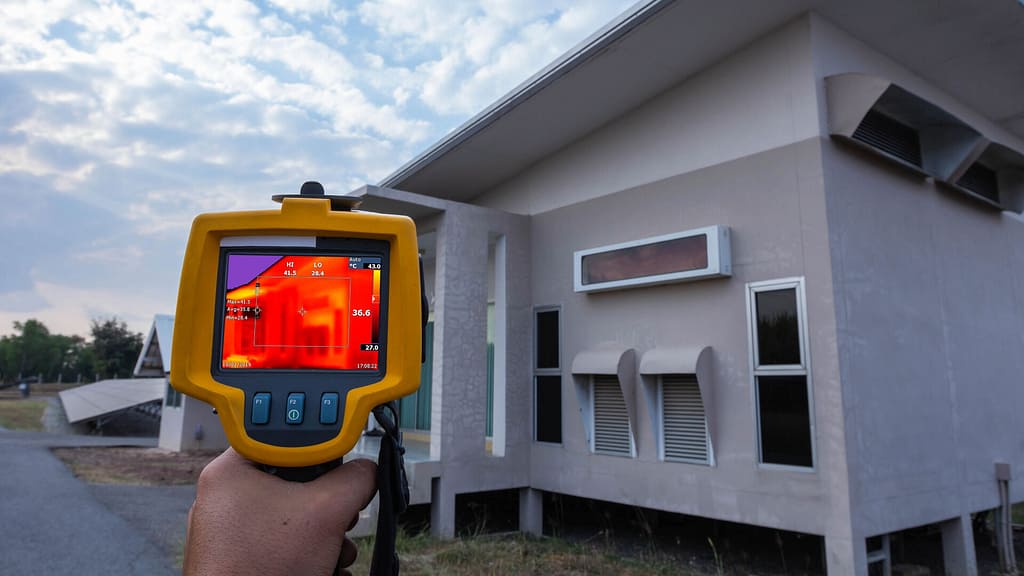
Advanced tools like moisture meters or thermal imaging cameras can provide definitive proof of a leak source. These tools show changes in moisture levels or temperature, helping you pinpoint precisely where the leak originates.
Professional Help
When all else fails, or if you’re unsure of your findings, the most foolproof way to confirm a roof leak source is to hire a professional. They can perform a thorough inspection and may use specialized equipment to identify the leak source accurately.
Conclusion
It’s vital to emphasize that detecting a roof leak is a multi-step task that requires vigilance both inside the home and on the roof itself. The importance of prompt identification of water stains, damp walls, or compromised shingles cannot be overstated. Early intervention can not only save you the structural headache but also spare you from escalated costs and potentially hazardous living conditions.
The journey from spotting the first signs of a leak to confirming its source is crucial for the longevity of your home and peace of mind. While you might feel capable of undertaking minor inspections yourself, it’s always advisable to consult with a professional for comprehensive diagnosis and repair. This ensures that you’re not just putting a temporary band-aid on a problem that requires surgical precision.
Fact Checked by Jacob Petrosky – 8/31/23
